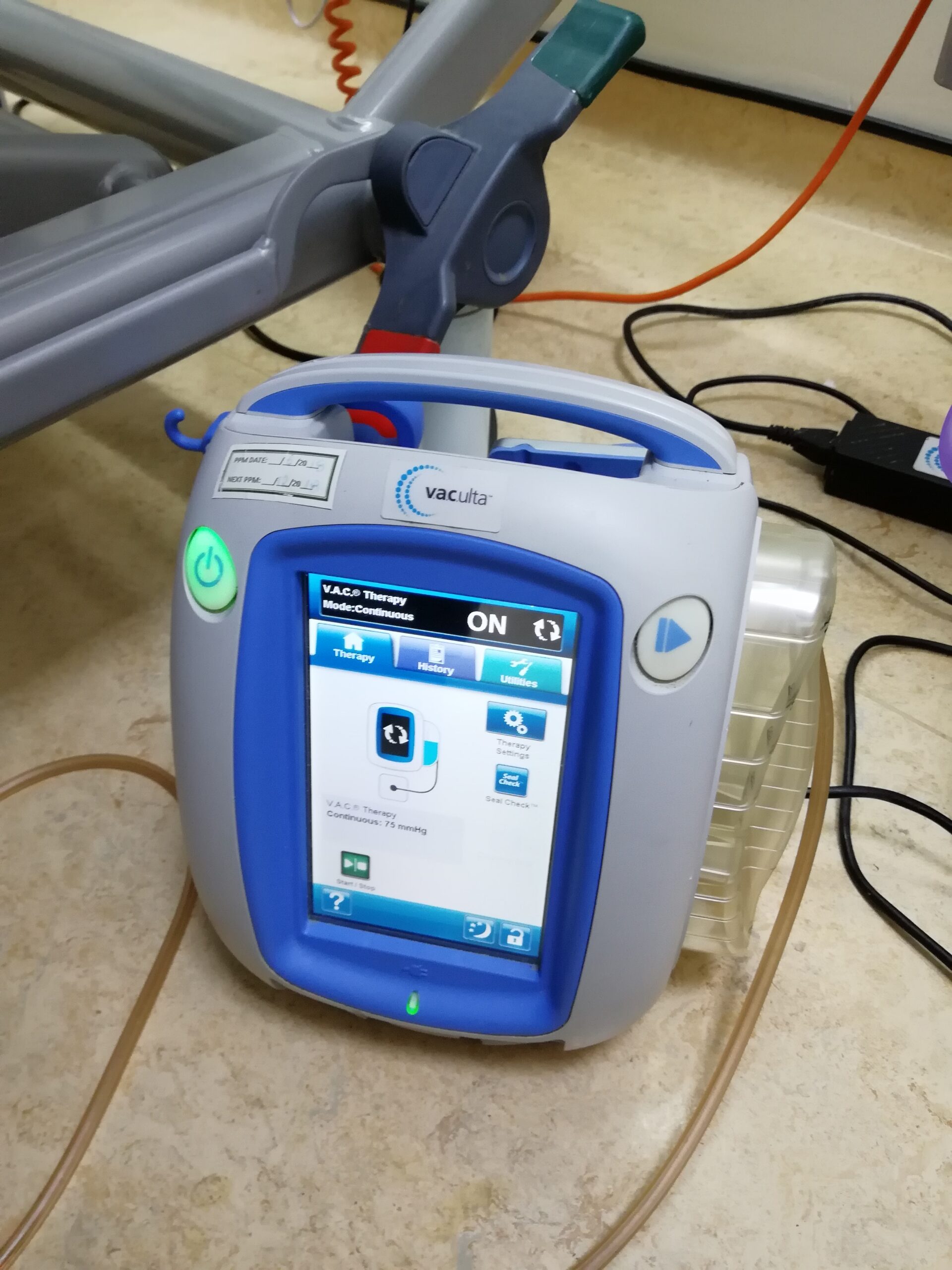
Negative Pressure Wound Therapy
VIEW COMPLETED NOTE
Patient identified by name, ID with picture and facial recognition. SN performed skilled observation and assessment of all body systems from head to toe. No signs or symptoms of acute distress noted. SN assessed home for safety & Risks for fall. Safety & preventative education. SN performed skilled observation and assessment, monitored vital sign and blood pressure and found them within normal limits. SN assessed mental and physical status, evaluated compliance, effectiveness and side effects of medication, diet and nutritional status, and patient’s and/or caregiver’s knowledge of signs and symptoms of complication. SN performed Wound VAC to sacrum. SN removed old VAC dressing and dispose appropriately. Cleanse wound with Normal Saline Solution, pat dry with sterile gauze. Cut sponge and fit into wound. Cover with occlusive dressing. Connect the VAC @ 125 mmHg and settings (continuous) according to physician’s order, every other day. Open the drape package. Cut the drape to the size needed. Place the drape over the wound site. Smooth the drape as you stick it around the wound to prevent any wrinkle that may leak. Connect the tubing to the sponge dressing and the tubing to the pump unit. Open the clamp on the tubing. Turn on the VAC pump. Listen and watch for leaks. Old canister had 50 mL with sanguineous drainage, which was exchanged for a new canister and dated. Patient tolerated well all procedure without complaint or complications. Used universal precautions & aseptic technique. Patient is incapable of perform VAC wound care due: complexity of procedure. There is no caregiver willing and able to perform this skilled care. Instructed patient training for patients and their caregivers who will be using the device at home should include how to: Recognize signs and symptoms of complications, such as redness, warmth, and pain associated with possible infection Contact appropriate healthcare providers, especially in emergency situations, respond to emergency situations; for instance, if bright red blood is seen in the tubing or canister, to immediately stop NPWT, apply direct manual pressure to the dressing, and activate emergency medical services. Patient/caregiver verbalized understanding teaching.
Copy and paste the note, to start another note refresh the Desktop (F5 in Windows)

